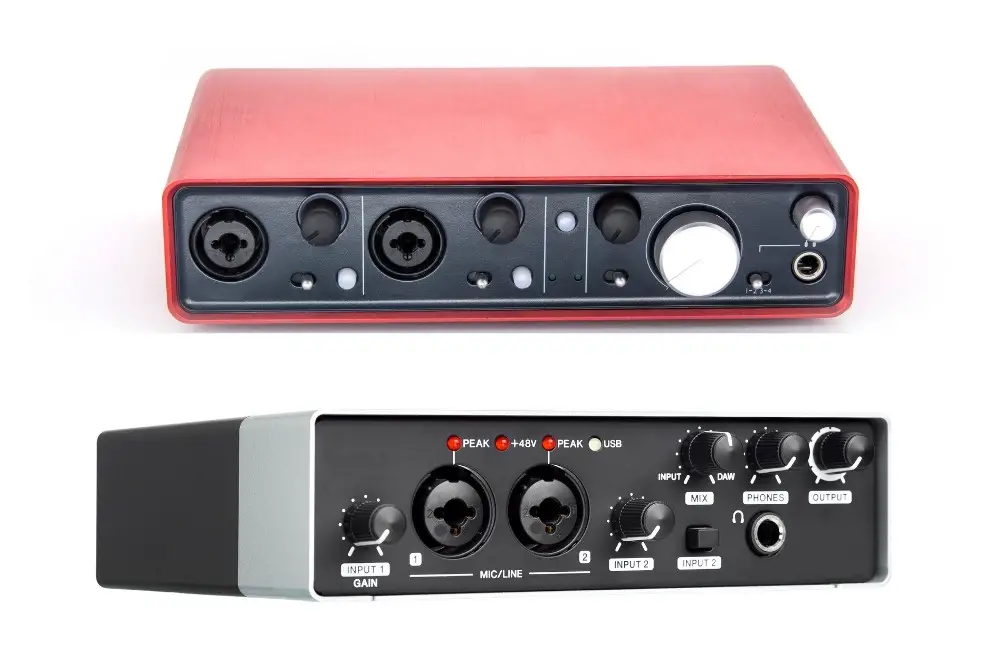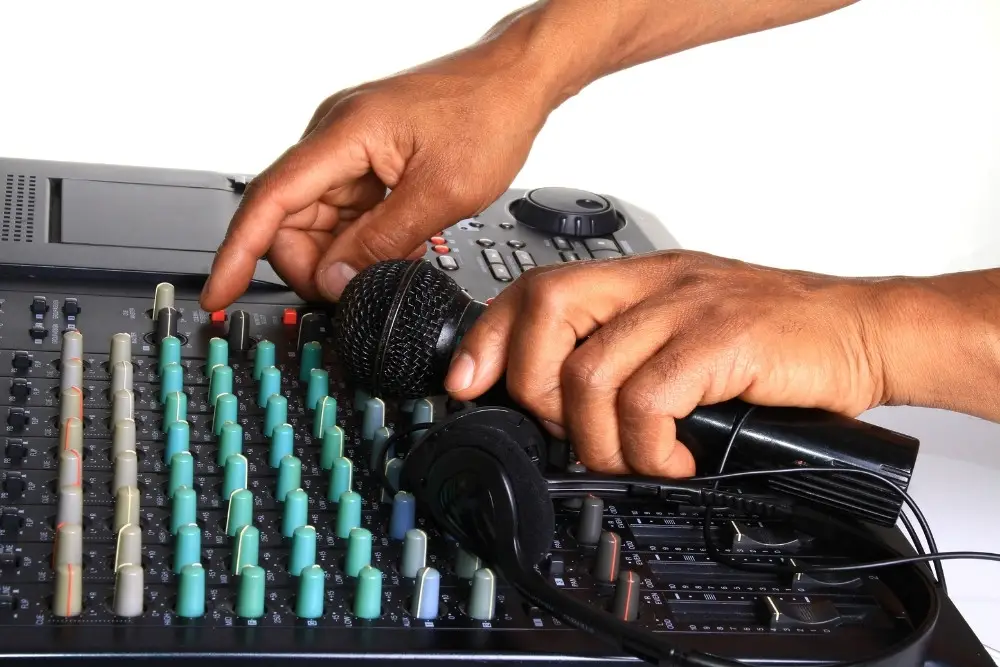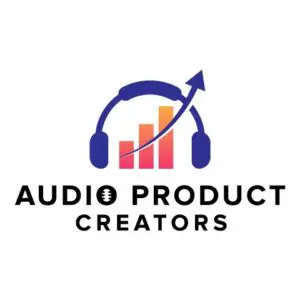When a person is new to the audio world to producing professional-quality audio products (audiobooks, radio, podcasts, TV, movies, audio magazines, audio, and video courses, etc), the first question is what type of software to use to get the best results.
And here comes the issue: What do a Digital Audio Workstation and an Audio Editor Do? Are they some kind of software? Are they supposed to be used in different stages of production? Do they require any external devices to make them work?
A DAW allows the recording, mixing, and mastering of several audio tracks, and requires a digital audio interface to connect mics for vocals, acoustic, or Line instruments (keyboards, synths, drum boxes). A digital audio editor deals with one audio file at a time but provides the best results at the mastering stage with the right plugins.
Main Differences Between a DAW and a Digital Audio Editor
Let’s take a look at the features each of them offers and when to use them in your audio product:
| Action | DAW | Digital Audio Editor | Audio Products |
| Recording Stage: Vocals, acoustic instruments, or digital instruments | Yes Great for the recording stage | No Only for the post-production stage for the highest results | Audiobooks Radio/TV voice over Songs Music Podcasts Movies |
| Mixing Stage: Any type of audio tracks | Yes Really good virtual plugins to improve several audio tracks at the same time | Yes Powerful plugins, surround mixing. Con Only one track at a time | Audiobooks Radio/TV voice over Songs Music Podcasts Movies |
| Mastering Stage: Final audio tracks achieved after mixing stage | Yes It provides good plugins for the job Cons + It requires installing extra powerful plugins to enhance and refine the audio tracks + It takes some time to bounce/render the final audio track | Yes It specializes in offering state of the art plugins to get the best possible results Pros + It reduces the amount of time: it modifies the audio file directly +It offers multiple redo commands | Audiobooks Radio/TV voice over Songs Instrumental music Podcasts Movies Audio products with 7.1 surround sound |
- Whereas both a DAW and a Digital Audio Editor are software that enables a person to manipulate audio files, DAWs perform non-destructive editing on the audio files.
A DAW always keeps a security copy of the original audio file. Once you are satisfied with what you’ve recorded and mixed in your DAW, you may decide to move to your favorite audio editor to get the best out of each audio track.
- You may also do the mastering stage with a DAW, working on one single track at a time, but making sure you have the best industry plugins to achieve it.
Here is when you see the difference between an audio editor and a DAW:
- DAWs (Digital Audio workstations) already include very good plugins depending on the version you buy. The more advanced the plugin bundle is, the better tools and higher price you will see
- In a digital audio editor, you will see some good basic plugins, but you will definitely have to purchase the powerful ones for an extra price.
For me, it’s just a matter of personal choice if you want to use a free audio editor or buy one. DAW’s tend to include sets of plugins (or bundles), from standard professional to high professional versions. The more advanced the plugins, the more mastering tools you can have for a higher price.
In this table I’m going to show which DAW and digital audio editor I would use depending on the type of audio product:
| Type of Project | Recording and Mixing DAWs | Recommended Plugins Mixing Stage | Recommended Plugins Mastering Stage |
| Voice over for TV/Radio Audiobooks Podcasts | DAWs Pro Tools Cubase Cakewalk Reaper Audio Editors Sound Forge Pro 12 WaveLab Pro 9.5 Audacity (free) WavePad (free) | ERA Bundle Standard | Ozone 9 Standard |
| Song vocals Music Soundtracks | DAWs Pro Tools Cubase Cakewalk FL Audio Editors Sound Forge WavePad (free) | ERA Bundle Standard Virtual Instruments Plugins Reason+ Spitfire BBC Symphony Orchestra Sound Effects Libraries | Ozone 9 Standard Brainworx |
| Surround mixing for music or movies | DAWs Pro Tools Cubase Cakewalk Audio Editors Sound Forge WavePad (free) | Waves 360 Surround Tools Plug-in Bundle | Ozone RX9 Abbey Road TG Mastering Chain |
So, do you really need an audio interface to record voiceovers, vocals, or music in general? Let me answer these questions by clarifying some terms.
What Is an Audio Interface
An audio interface is a device connected to a computer through a USB port (sometimes Firewire) to record any kind of audio. You can connect microphones, Line instruments (keyboards, synths, drum boxes), or RCA devices and record them in your favorite DAW. The more mic inputs, the higher the price.

- Basic audio interfaces start with 2 inputs, where you can connect standard dynamic or professional condenser microphones that require phantom power with XLR professional cables, and in Line instruments such as an electric acoustic guitar, digital keyboards, synths, and other music modules.
- Using the correct adaptors, you can also connect a record player (vinyl records), cassette tape players, CD players, and any other device that uses RCA connectors (white and red cables for audio).
- Many portable or handy recorders also work as a USB audio interface. Thus, you can have both services in one single device (take a look at my top recommended gear).
Do You Really Need an Audio Interface?
To know if you really need an audio interface for your audio projects, consider first what you need to record:
| Audio Project | Audio Interface Necessary During the Recording Stage | DAW or Digital Audio Editor? |
| Single: Lead vocal Podcast speaker Audiobook narrator Voice over artist | No You can record each separate vocal with a USB mic directly to your DAW Use a handy recorder with a good quality condenser mic for experienced audiobook and voice-over narrators | Any of them You can edit and mix what you recorded with any of them |
| Two or more: Vocals at the same time Podcast speakers Audiobook narrators Voice over artists | No, if using a USB mic But make sure the USB mic is multi-pattern, so you can set it to Figure of 8 or Omnidirectional Yes, if using several mics | DAW if using several mics You will need a separate track for each microphone Digital Audio EditorIf editing all in a single track |
| A single acoustic instrument | No You can record it with a USB high-quality microphone directly to your DAW You can also use a handy digital recorder | Any of them You can edit and mix what you recorded with any of them |
| Music Soundtracks | Yes For several musicians playing simultaneously Instruments with several components, like drum kits | DAW if using several mics You will definitely need a separate track for each microphone |
| Surround mixing for music or movies | No All the elements requested or created by the sound designers should be complete before the mixing stage | DAW For the mixing stage Digital Audio Editor For the mastering stage |
What Is a Mixer or Mixing Console

A mixer, mixing console, or audio mixer is a device that captures the sound from microphones, sets effects (reverb, delay), panning, increases or decreases gain, equalizes, groups sounds in one single fader, mutes, soloes, sends to effects units, and then to a specific output like a PA system, a digital recorder or an audio interface.
- You can connect several instruments or vocals to a mixing desk, apply some effects, and from there send them to an audio interface: If you want to apply some effects to those inputs to save some time in the editing stage during the recording process.
- Most digital mixing desks have a built-in audio interface with several types of inputs, as well as portable and handy digital recorders, which usually have from 2 to 8 inputs.
Audio Interface Vs Audio Mixer for Recording
If you want to record directly to your DAW you may do it with ease. The visual interface (the way DAWs look on screen) imitates a mixing desk very accurately. Therefore, instead of handling the knobs of a mixing desk, you will be using the mouse of your PC or the tip of your fingers on a tablet or smartphone.
- A very practical way to handle multiple audio tracks in a DAW and apply effects in the channel strips without using a mouse is by attaching a control surface hardware device.
- A control surface device looks like a basic digital mixing desk. That is the key that led Digidesign Pro Tools, later purchased by Avid, to become the number DAW and Audio Editor in the audio industry.
Audio Interface Vs Mixer for Podcasting
If you are recording and then editing before uploading the finished audio track to your podcast website, an audio interface is enough to do the job. If you are recording several mics simultaneously, using a digital mixer is more practical and saves a lot of time. Make sure the gain is optimum to avoid clipping distortions.
- You can use either a DAW or a digital audio editor to make the necessary changes in the mixing and mastering stages
- I prefer to use a digital recorder, or a digital mixing desk when I record more than two speakers in a podcast. You can notice (with practice) that it’s easy to see the lights on the faders of each track in the mixing desk and move the knobs on it to avoid clipping sounds (red light). Everything must be in green and occasionally in yellow.
- It saves a lot of time to set a compressor/limiter in the mixing desk, equalizing a little bit the voice of the participants and even panning (creating the left, center, and right position of each sound) in the recording stage. In the editing stage, all you have to do is remove unwanted sounds, insert sound effects and music, and render the audio track in the desired format (AAC, MPE, etc.)
Audio Interface Vs Mixer for Streaming
When streaming a live podcast with one or two participant speakers, an audio interface can do a very good job. If you have several participants, using a digital mixer makes things easier to handle (use a compressor, limiter, and EQ before going live). Streaming audio requires a louder overall sound than a normal podcast episode.
- On a mixer: Set the levels of each mic with the Gain button in the track and keep the fader of the same track always in 0 dB.
- Use a standard compressor/limiter in the digital mixing desk or in your DAW at first. If the participants tend to speak louder, set the compressor/limiter to Hard compression
- It’s essential to keep a loud sound but avoid clipping at the same time. Only practice can lead you to master this.
- Some microphones tend to boost the low frequencies in male voices, so, don’t touch the low-frequency knob on the mixing desk, but do increase it a bit on the channel strip where you have female voices.


